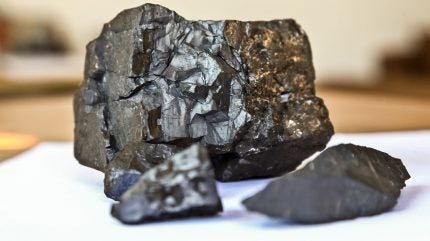Sign up for daily news updates from CleanTechnica on email. Or follow us on Google News!
The age of the petroleum economy is drawing to a close, and new solar window technology is here to help. A solar window is engineered to let daylight in while also catching solar energy and generating clean electricity, which can be used or stored in a building or fed into the local grid. Getting the right balance between lighting and energy production has been a tricky challenge, but the technology is maturing and poised for widespread commercial adoption.
Big Milestone For See-Through Solar Window Firm
Innovators have come up with two main kinds of solutions for see-through solar windows. One consists of a thin solution of photovoltaic particles, which can be coated over window glass. The other involves steering sunlight towards the edges of a pane of glass, where it can be collected by silicon solar cells.
The latest development in the see-through solar window field comes from the Australian firm ClearVue, which has focused on the silicon solar cell pathway. The company has been making some big moves of late, having set up an office in San Jose, California.
Last week, ClearVue achieved an important milestone when it won its first order of solar cladding, consisting of more than 200 architectural black photovoltaic modules along with the company’s custom framing system. The cladding, which will screen equipment at a building in Perth, is expected to be installed next year.
“This initial order marks the first sale of part of ClearVue’s solar building envelope solutions validating the company’s commercial strategy to offer a complete solar façade product suite for building owners, developers, and architects,” ClearVue explained in a press statement.
“This is a pivotal moment for ClearVue,” Martin Deil, the Global CEO of ClearVue Technologies, emphasized. “This sale of our solar envelope solution confirms our commercial strategy and shows the value the market is starting to place on energy efficient smart building solutions.”
See-Through Solar Windows: How Do They Work?
The black cladding involved in the Perth project is one of several photovoltaic products offered by ClearVue in a range of styles and colors to suit aesthetic priorities as well as generating clean kilowatts. They share the same basic silicon technology, though.
“ClearVuePV uses nano and micro particle technology to internally diffuse, redistribute, and reflect elements of the incoming light towards the edges of the glass panel, where it is collected by monocrystalline silicon-based PV modules,” the firm explains.
That’s the short version. The company also deploys thin films in its technology, and you can find all the details on its website.
“The combined solution prevents excess heat and unwanted solar radiation (UV and infrared) from entering building spaces; these wavelengths are redirected towards the edges of the glass pane for energy harvesting through conventional (but deeply building-integrated) PV solar cells to create clean energy — all whilst allowing natural visible wavelength light to pass through largely unaltered to provide maximum natural daylighting,” ClearVue summarizes.
Aside from the benefits of making clean electricity on site, ClearVue also states that its technology provides for energy savings of up to 22% on heating and cooling needs. The solar technology is integrated into buildings, not applied as an add-on like conventional rooftop solar arrays.
As for the amount of electricity produced, that varies depending on the location and design of the building as well as local climate conditions. At an 18-window test site in Warwick Grove, for example, the company estimated an annual output of 605 kilowatt-hours, which is reasonable enough considering that the windows were not installed in an optimal configuration. ClearVue also calculated a more impressive figure of 1,142 kWh for the same test site, if the orientation had been optimized.
“A realistic estimate based on actual measured performance at Warwick Grove predicts generating approx. 70 kWh/day from each 1000 m2 of ClearVue windows installed. Annually, in excess of 20 MWh from each 1000 m2 of ClearVue windows in climates like Perth’s,” the company states.
See-Through Solar Windows For The US Air Force
The US Air Force was an early adopter of utility-scale solar arrays in the early 2000s, helping to push the commercial market for clean power in the US. Whether or not they can do the same thing for see-through photovoltaic technology remains to be seen, but they have taken ClearVue’s technology out for a spin under a collaboration with the Florida-based smart glass firm Nordis.
“The Nordis product, marketed as TruTintTM, uses colour-coated nanoparticles, which are suspended in microscopic wells inside a nanoimprinted film and sandwiched between two sheets of glass,” Nordis explains. “Electric power is connected to each side of a conductive film coating to create a low-cost, instantly switchable piece of smart glass with infinite tints and colours.”
That may seem more appealing to the architectural aesthetic than to national defense purposes, but Nordis also notes that its technology allows for the incorporation of digital displays which could prove useful to the DoD, so hang onto your hats.
The two companies began discussing a collaboration back in 2018, and by 2021, Nordis was evaluating an initial proof-of-concept in a building operated by the US Air Force Civil Engineering Center at Tyndall, deploying ClearVue’s clean electricity technology to power its tint-shifting glass. That Phase 1 project involved a single pan of solar glass with a controller. Phase 2 involved four additional windows, with evaluation slated for August of 2022.
Onwards & Upwards For The Coal-Killing Window Of The Future
I’m reaching out to the Air Force for an update on the ClearVue project. Meanwhile, more activity has been stirring in the area of thin-film photovoltaic treatments for windows.
Here in the US, NEXT Energy Technologies is one commercial-ready firm gearing up for high-volume manufacturing. The company got its start as a spinoff from the University of California–Santa Barbara back in 2010 and went on to win a grant in 2017, helping it to accelerate its R&D work. The company deploys a well known slot-die process to cut the cost of applying its solar coating to architectural glass.
In another development with far-ranging implications for decarbonization, researchers at Michigan State University are exploring the application of see-through photovoltaic technology to the red hot field of agrivoltaics, an emerging science that strategically deploys solar panels in tandem with farming activities.
Among other energy-related window treatments to cross the CleanTechnica radar is an experimental three-in-one glass that leverages the kinetic energy of raindrops. If you have spotted any others, drop us a note in the comment thread.
Follow me via LinkTree, or @tinamcasey on Threads, LinkedIn, and Instagram.
Image: The see-through solar field is poised for widespread adoption, as indicated by an array of more than 200 sleek, black solar windows to be installed at a building in Australia (courtesy of ClearVue).

Have a tip for CleanTechnica? Want to advertise? Want to suggest a guest for our CleanTech Talk podcast? Contact us here.
Latest CleanTechnica.TV Videos
CleanTechnica uses affiliate links. See our policy here.
CleanTechnica’s Comment Policy




